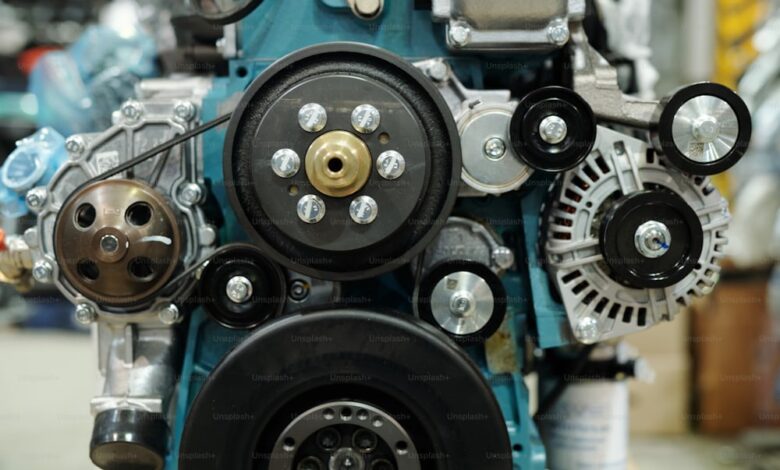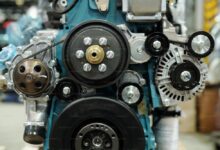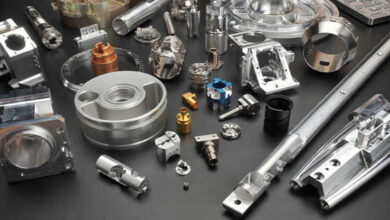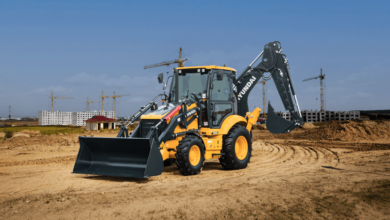The Role of AI Powered Machine Vision in Shaping Smart Manufacturing

Machine vision is a cutting-edge technology that enables computers to “see” the world around them. It utilizes a combination of cameras, sensors, analog-to-digital conversion, and digital signal processing to capture visual data and process it for specific tasks. This processed information is then transmitted to a computer or robotic controller to inform decision-making and guide actions. In a sense, machine vision enables machines to interpret images and make decisions based on that information, similar to how human vision works but with the precision and speed that computers offer.
Often confused with computer vision, machine vision refers more specifically to the industrial application of visual recognition. It integrates with technologies like artificial intelligence (AI), machine learning, and deep learning, to improve image processing efficiency, enabling faster, more accurate decision-making.
The integration of AI-powered machine vision software is playing a pivotal role in the evolution of smart manufacturing by enhancing the way industries approach automation, quality control, and production efficiency. AI powered Machine Vision system allows for faster defect detection, predictive maintenance, and optimized production processes, driving cost savings and boosting overall productivity.
How AI Powered Machine Vision Defect Detection works
The process of automating defect detection in manufacturing with machine vision systems involves several key steps, from camera installation to algorithm development and continuous monitoring. Here’s how it works:
- Camera Installation and Dataset Collection
The first step involves installing machine vision cameras at strategic points on the manufacturing line. These cameras capture high-resolution images of products to create a dataset to train the AI algorithms, enabling them to recognize different types of defects. - AI Training and Algorithm Development
The collected image dataset is used to train AI algorithms, which learn to identify defects based on various characteristics such as size, shape, color, and texture. The algorithms are designed to differentiate between acceptable product features and defects. - Deploying AI Models to the Vision System
Once the algorithms are trained, they are deployed to the machine vision system, where they can begin analyzing products in real-time. The system inspects every product on the line, looking for defects, and provides immediate feedback. - Defect Detection and Output Communication
As defects are detected, the machine vision system communicates the findings to the outside system. This could involve triggering a notification for further inspection or removing defective products from the line. - Continuous Monitoring and Fine-Tuning
AI algorithms are continuously monitored and fine-tuned to ensure optimal performance. As new data is collected, the system’s accuracy improves, enabling it to detect an even wider range of defects. - Cloud Analytics and Reporting
Data collected by the machine vision system is sent to the cloud, where it can be analyzed to generate detailed reports and insights. This helps manufacturers track defect rates, identify patterns, and make data-driven decisions to improve the overall production process.
Uses of Machine Vision System in Manufacturing:
- Defect Detection and Visual Inspection: Machine vision systems automate the visual inspection process, ensuring that every product meets the required quality standards. By analyzing each item for defects such as scratches, dents, or imperfections, these systems improve accuracy and consistency, leading to higher customer satisfaction and fewer returns.
- Product and Object Detection and Counting: Machine vision systems equipped with cameras and AI can accurately detect and count items, components, or parts on a production line. This capability is essential for inventory management, assembly processes, and ensuring that products are properly accounted for at every stage of production.
- Dimension or Diameter Measurements: During product inspection, machine vision systems can measure critical dimensions such as diameters, radius, or overall size with high precision. This ensures that each product adheres to strict specifications, reducing errors and improving product consistency.
- Packaging Error Detection: Machine vision systems are used to detect packaging errors, such as open seals, missing items, or improperly sealed packages. By identifying these issues before products reach customers, manufacturers can prevent defective or incomplete deliveries, enhancing both quality control and customer satisfaction.
- Labeling Error Detection: Machine vision can also be utilized to read labels, QR codes, barcodes, and other textual information on packaging. With the integration of AI, these systems ensure the accuracy of labeling, detecting misprints, missing text, or incorrect codes, which is crucial for traceability, compliance, and customer information accuracy.
Customized Inspection Solutions for Machine Vision Systems
One of the key advantages of machine vision systems is their ability to be tailored to the specific needs of different manufacturing environments. By leveraging advanced imaging technology and software, the customized inspection solutions can be designed to address particular challenges such as high-speed inspections, complex part geometries, or intricate surface defects. Customization allows for adjustments in lighting, camera configurations, and processing algorithms, enabling machine vision systems to deliver precise and reliable results in industries.
Camera Selection and Configuration
Choosing the appropriate camera for a machine vision system is crucial. Industrial cameras offer a variety of resolutions, from 1 to 29 megapixels, and can be tailored to meet the specific needs of the manufacturing process. Whether it’s for high-speed inspection or fine-grain defect detection, we provide customized camera solutions designed to capture the highest-quality images with precision.
- CIS (Contact Image Sensor) Cameras
For microscopic defect detection on products like metal sheets, PCBs, or textiles, CIS cameras offer exceptional image quality. They use a linear array of sensors in direct contact with the surface being inspected, providing highly detailed, distortion-free images. - Line Scan and Area Scan Cameras
For fast-moving production lines, line scan cameras are ideal as they capture images one line at a time, providing high-resolution images of long or cylindrical objects. For stationary products, area scan cameras provide full-frame images, ensuring comprehensive coverage.
Illumination Optimization
Proper lighting is vital for capturing clear and accurate images.The appropriate illumination systems are selected , positioning lights to ensure that defects are highlighted and visible for accurate detection. By optimizing lighting, we can enhance the performance of machine vision systems, ensuring reliable defect detection.
Integration with Machine Vision Software
Machine Vision software is an advanced inspection automation solution designed to seamlessly integrate with machine vision cameras, CIS (Contact Image Sensors), customized imaging devices to automate complex inspection processes in manufacturing in real-time. The software supports the customization of algorithms for specific industry needs, making it adaptable to various types of defects and product variations.
Types of Machine Vision Systems
Machine vision systems come in various forms, each designed for specific applications and environments:
- 2D Vision Systems: These are the most commonly used systems for pattern recognition tasks, where images are captured in two dimensions. They are often used in applications such as barcode reading, part inspection, and defect detection.
- 3D Vision Systems: These systems operate in three dimensions and offer enhanced accuracy for measurements and inspections. They are commonly used in applications that require depth perception, such as robotics or packaging inspection.
- Multispectral and Hyperspectral Imaging: These advanced imaging techniques capture data across multiple wavelengths, allowing for more detailed analysis. Multispectral imaging is often used for inspecting materials or detecting contamination, while hyperspectral imaging is employed in applications like food safety and medical imaging.
Applications of Machine Vision
Machine vision is used in a variety of industries to perform a wide range of tasks. Some of the most common applications include:
- Manufacturing: In industrial settings, machine vision is used to inspect parts, identify defects, and ensure product quality. For example, it can check the accuracy of components on an assembly line or analyze the quality of materials used in manufacturing.
- Medical Imaging: In the medical field, machine vision is used for diagnostic purposes, such as analyzing MRI scans or detecting anomalies in blood tests or brain scans.
- Automotive Industry: Self-driving cars rely on machine vision to identify obstacles and navigate their environment. Cameras and sensors are used to detect other vehicles, pedestrians, traffic signs, and other objects that may impact the car’s driving path.
- Retail & Logistics: Machine vision is used in retail and logistics to read barcodes and track inventory. It can also be used for recognizing products on a store shelf or identifying objects in a package.
Why choose Machine Vision System
Machine vision systems offer several advantages over traditional human-based inspection processes:
- Eliminates Human Error: Machine vision can achieve greater accuracy and consistency than the human eye. It can inspect hundreds or thousands of items per minute without fatigue, ensuring reliable results.
- Reduces Downtime: By replacing manual inspection and reducing the need for physical touch, machine vision minimizes wear and tear on machines, reducing the risk of downtime and costly repairs.
- Increases Efficiency and Reduces Costs: Machine vision speeds up production processes, reduces scrap rates, and lowers labor costs, helping companies increase efficiency and cut overhead expenses.
- Improves Workplace Safety: By automating hazardous tasks and reducing human intervention, machine vision enhances workplace safety, particularly in dangerous manufacturing environments.
Machine vision systems are optimized for specific tasks with lower processing power requirements, making them suitable for manufacturing environments, while computer vision systems are more general-purpose and may involve higher processing power and broader capabilities.
Machine vision is an invaluable technology that brings precision, speed, and consistency to industries ranging from manufacturing to robotics. Its integration with AI and deep learning allows for continuous improvement and greater flexibility in automated systems. As the demand for automation and data analysis grows, machine vision will continue to play a pivotal role in revolutionizing industries and enhancing productivity across the globe.
Keep an eye for more news & updates on Tech Pro Magazine!





